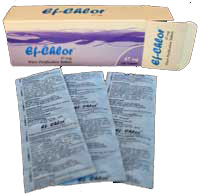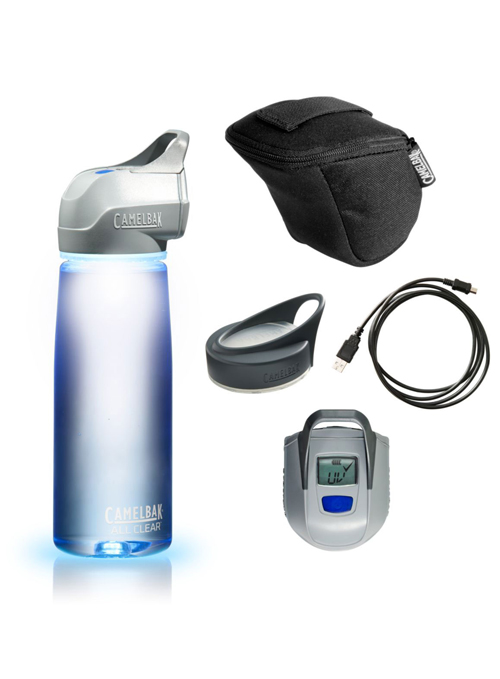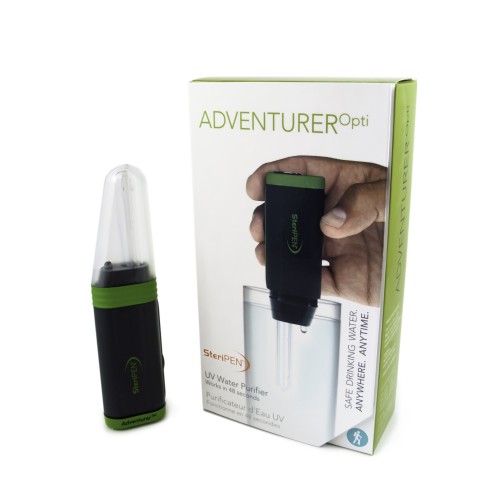While on a trek, you are in the wild to enjoy the nature and the thrill of it. Its very important that you stay healthy and do not take ill on the trek to have a joyful experience in the wild.
Diarrhea is by far the most common problem we encounter on any trek. On an average, 1 out of 4 trekkers are affected by it. If not well handled, the same diarrhea can become a nightmare forcing one to retire from the trek itself !! Mountaineers have died on Everest by slipping and falling to answer the call.
Water is a common cause of stomach problems on a trek. On the other hand you need to drink lots of water to stay hydrated and also keep AMS away !! So it very important that you drink it right and hence treat your water before you drink.
Below are the ways to treat your water on a Himalayan trek while not making it too complicated and making it a research subject.
What Are The Threats From Drinking Water On A Trek
Bacteria: E. coli is the most common cause of stomach infection on a trek. Other bacteria like Dysentary are common as well. Water can easily contain bacteria which when consumed causes stomach infection.
Viruses: Water might contain virus which causes harm to us humans. However, there is very less chances that water in the hills may contain viruses, specially in high altitudes, cold conditions of the Himalayas. If you are trekking in hot conditions, then there are chances your water might contain virus.
Protozoa: These are by far the most feared and most common causes of water borne infection in a trek. These are single celled organism which has high resistance to cold water and other water treatment methods. Some of them for a cyst which protects them from water treatment.
Particulate Matters: These are particles that you can see floating on the water and are easy to filter them out. Not usually very harmful, but still you would not like to consume a rotten leaf or a dead insect !
MYTH BREAKER: Water In The Himalayas Are Better Than Packaged Drinking Water And Are Safe To Drink Directly
It is usually considered that the water in the Himalayas are clean and you can drink it directly. While it is not 100% wrong, it is not 100% correct as well. Water in the hills are also the source of water for animals on the higher area. The high altitude region in the Himalayas are also used for grazing domestic animals and sees lot of sheep, cattle and yaks. These animals poop anywhere !!
Sometimes the same stream water is used by the higher camps. This gives lot of opportunity to contaminate the water with human waste and animal poops. A stream running through the forest might contain lots of particulate matter like rotten leaf, dead insects, etc.
Spring water in the high altitude terrain are safe for drinking directly as there are less chances of it to be contaminated by particles. Water coming out of melting snow are safe as the microorganisms cannot grow in that cold.
Chose Proper Water Source
The first and most important step is to choose a proper water source. So what can be a "proper water source" ?
Always fetch water from running streams. The faster the better. Stagnant water has high risk of bearing pathogens, irrespective of the cold surrounding. Whereas, as fast gushing water has very low chances of bearing pathogens in it. It even has less particulate materials.
If you can source water from natural springs, its the best as it acts as a natural filter and has very less chances of having particles in it.
Different Ways To Treat Your Water On Your Treks
There are several ways to treat your water but the first steps is to fill a clean particle-free water into your bottle. To do that use a filter or a clean handkerchief to keep away the particles entering the water bottle. After you fill your water bottle with clean particle-free water, follow the any of the next steps to get it free of any pathogens.
Boiling Your Water: Boiling is one of the best way to clean your water of the pathogens like bacteria, virus and protozoa. However, it requires stove, utensils and fuel and is limited to camps. When you are on the trail and have finished the boiled water you filled from the camp, the only option you have are the natural sources. When you are boiling the water, make sure you bring it to boil. Water usually boils quickly in high altitude due to low atmospheric pressure. So its important to cover it by a lid and boil it for good time to increase the temperature. How much time you should boil the water for is guided by the quantity of the water your are boiling. Mostly, all of the pathogens are killed at a temperature of over 70 ° C
PROS:
- Kills almost all of the pathogens
- Also protect against cold
CONS
- Needs a system. Not Portable
- Requires more fuel
Using Chlorine Tablets: Free Chlorine Ions are known to clean water and these Chlorine Tablets are great rescue for hikers and outdoor people as it is very convenient to carry and provides a defense to the deadliest of the pathogens. It acts less time to make pure water available for drinking. It usually comes in strips. It is used by dropping a tablet into your water bottle and giving it some time before drinking it.

Hind Pharma produces tablets usable for campers and in emergencies: https://www.hindpharma.com/water.html a product of Hind Pharma declares that
"Ef-Chlor (NaDCC tablet), it is a broad spectrum fast acting sanitizer and water sterilizer , rapidly effective against BACTERIA, VIRUSES, FUNGI and PROTOZOA. Total spectrum of activity i.e. effective against hydro hypophilic viruses, gram positive & gram negative bacteria, fungi mould, yeast, mycoplasmas & protozoa."
PROS:
- Convenient to use
- Light Weight
- Effective against deadliest of the pathogens
CONS
- Some tablets make water taste bit odd. ( add TANG to flavour the water in this case )
Using Iodine Drops:
Iodine is good but not the best way to treat drinking water in high altitude. It is known to kill water borne pathogens, but takes some time to make the clean water ready to drink. It is also ineffective against some protozoan cyst which causes deadly stomach problems. There are iodine solutions which are available in market. Most chances are that you will be carrying Betadine ( 10% Iodine solution ) in your medical kit. Use 4 - 5 drops in 1 liter of water and let it rest. You also get " Tetraglycine hydroperiodide" tablets in medical stores. Usage - 8mg per liter of water

PROS:
- Most chances are you will be carrying betadine ( 10% Iodine solution ) in your medical kit.
- Kills most pathogens but for few protozoan cyst
CONS:
- Takes time and at cold temperature, takes more time to clean the water ( 30 minutes to 1 hour )
- ineffective against some protozoan cyst which causes deadly stomach problems
- It should not be used by persons with allergy to iodine, persons with active thyroid disease, or pregnant women
- Some tablets make water taste bit odd. ( add TANG to flavour the water in this case )
Ultra Violet Purifying:


CamelBak® has come up with a innovative solution of using UV to clean the water instantly. It is also a water bottle so can be consumed directly within a minute.
read more about it here : https://shop.camelbak.com/all-clear-bottle/d/1208
SteriPEN Adventurer Opti
"Lightweight water purification for peak performance in the outdoors! SteriPEN Adventurer Opti was built for the toughest mountains and rivers in the world. Backpacker Magazine gave it their Editor’s Choice Award in 2011 for changing the face of portable water purification. Recipient of a 2012 Desnivel Award … one of the 15 best new products. When camping, backpacking & hiking, if you won’t have access to the power grid for several days a time, this is the water purification system for you."
read more here https://www.steripen.com/adventurer-opti/
PROS:
- Instant pure water available for drinking
CONS:
- Dependency on batteries and power system
- Too much to take care of
- Fragile and not suited for high altitude longer treks
Final Conclusion
- Boil you water when you are at camps.
- Use chlorine tablets for the trail.
- Use TANG or Vitamin C tablets to flavour the water to taste better.
- The locals and few others who trek frequently generally appears to be immune to the natural water. So by default they think that the water is safe.
- While it is the responsibility of the Trek Guides and Leader to provide you with clean water, the first responsibility is of the Trekker himself. You yourself need to take proper precaution on this matter and purify the water before drinking it everytime as you yourself are the best person to monitor yourself.
- You must make it a habbit of a 'must-do' check on the water each time you drink it. Asking the leader or the guide the methods they have used to purify the water or carrying a chlorine tablets yourself is the best practice